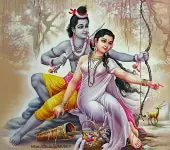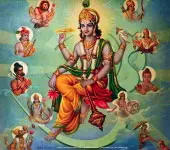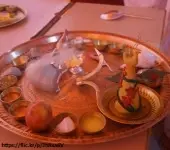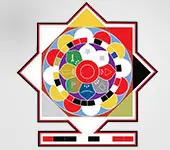Tataka Test - Sriram Ji's Moral Dilemma
Comments
Read more comments
Rakshasa Satra of Parashara
Sage Parashara once conducted a yaga called Rakshasa Satra. Thousands of Rakshasas were pulled into the fire and sacrificed during this yaga.
Meaning of Ganesha
Gana means group. Isha means lord or ruler. Ganesha means the lord or ruler of groups. In the universe, everything exists in groups. Devas as Vasugna, Rudragana, Adityagana. Matter as solids, liquids, gas. Time as past, present, and future. Groups of men, groups of men, groups of trees, groups of birds, groups of buildings. The lord or ruler of all such groups is Ganesha.
Quiz
What is the real name of King Janaka, father of Seetha Matha ?Transcript
(Click here to read more)
Our scriptures are full of incidents that shape our understanding of the world. Here's a story of courage, righteousness, and the complexities of moral duty. Killing a woman is a sin; Streehatya is a major sin. How did Shriram Ji face this moral dilemma when he confronted Tataka, the demoness? You must have heard that Shriram Ji killed a demoness called Tataka while accompanying Sage Vishwamitra to protect his yaga. On the second night after they left the palace, Vishwamitra, Rama, and Lakshmana stayed in an ashram at the confluence of the Ganga and....
Transcript
(Click here)
Our scriptures are full of incidents that shape our understanding of the world. Here's a story of courage, righteousness, and the complexities of moral duty.
Killing a woman is a sin; Streehatya is a major sin. How did Shriram Ji face this moral dilemma when he confronted Tataka, the demoness?
You must have heard that Shriram Ji killed a demoness called Tataka while accompanying Sage Vishwamitra to protect his yaga.
On the second night after they left the palace, Vishwamitra, Rama, and Lakshmana stayed in an ashram at the confluence of the Ganga and Sarayu, located in present-day Chhapra in Bihar. In the morning, they crossed the Ganga in a boat provided by the Munis of the ashram. As they were crossing the river, they could see a thick forest on the other bank. Vishwamitra explained that it was called Tatakavana and was under the control of the Rakshasi called Tataka. Tataka was not originally a Rakshasi; she was a Yakshini. Yakshas and Yakshinis are generally benevolent beings, associates of the Devas and allies of the Devas.
Tatakavana was a prosperous land comprising two towns called Karoosha and Malada. After he killed Vritrasura, Indra's body got smeared with the flesh and fat from the Asura's body. Indra also became very hungry. Devas brought him to the banks of the Ganga and poured pot after pot of Gangajal upon him. Indra became pure and blessed Karoosha and Malada, making them very prosperous places.
Then Tataka came and occupied them, turning them into a terrible forest.
Who was Tataka? There was a Yaksha called Suketu who didn't have children. Suketu propitiated Brahma through tapas, and Brahma blessed him with a daughter. Brahma was not sure about Suketu's intentions; he thought if he gave him a son, he might become too powerful and torment others. Tataka grew up and married Sunda; Mareecha was their son. Sunda was very wicked and cruel, torturing everyone. Sage Agastya cursed and killed Sunda. Tataka and Mareecha wanted to avenge his death and attacked Agastya. Agastya cursed both of them. Tataka became a Rakshasi and Maareecha became a Rakshasa. Their transformation into a Rakshasi and Rakshasa illustrates the consequences of unchecked anger and the desire for vengeance, obstructing yagas and killing tapaswis.
Tataka was occupying Tatakavana. Vishwamitra told Shriram Ji that it was time to relieve the places of the trouble caused by Tataka. But Tataka is a woman. Streehatya, killing of a woman, is a sin as per dharma shastra. Shriram Ji expressed this doubt. Vishwamitra said to Shriram Ji, the primary dharma of a ruler is the protection of his kingdom and subjects, so he shouldn't bother whether the enemy is a man or a woman. Still, as they reached the forest and Tataka attacked them with a shower of rocks, Shriram Ji only cut off her hands. But she kept on changing her form and continued the attack. Perseverance and determination are necessary when confronting evil. Then Shriram Ji pierced Tataka's chest with an arrow and ended her life. Malada and Karusha became free. Indra appeared and told Vishwamitra to give Shriram Ji all the divine weapons in his possession. Divine forces side with those who act in accordance with dharma. Uphold moral integrity despite personal biases and convenience. Fighting evil is not an easy task. Serving the greater good should be a priority. Life is complex, and decisions can have far-reaching effects. Before taking action, we should consider the potential consequences on ourselves and others, including the impact on relationships, communities, and the environment. If you are a good person, you will always get divine support and guidance.
The story of Shriram Ji and Tataka serves as a reminder of the complexities of morality, the resilience of the human spirit, and the eternal struggle between light and darkness.

English Topics
Ramayana
Click on any topic to open
- 51 Tataka Test - Sriram Ji's Moral Dilemma
- 50 Janaka's Spiritual Evolution - From Jnana to Bhakti
- 49 Dasharatha's Grief Decoded
- 48 Shiva burned Kamadeva at Chhapra, Bihar
- 47 Motherhood brilliance - Kausalya Supraja Rama
- 46 Bala and Atibala Mantras - Sriram Ji will unfold their superpower
- 45 Dasharatha Pleads With Vishwamtra Not To Take Away Young Sriram Ji
- 44 Abandoning Of Sita Devi - Is It Justifiable?
- 43 Vishwamitra Wants To Take Young Sriram Ji With Him
- 42 Position Of Sages In Ancient Bharata
Please wait while the audio list loads..
30
Ganapathy
Shiva
Hanuman
Devi
Vishnu Sahasranama
Mahabharatam
Practical Wisdom
Yoga Vasishta
Vedas
Rituals
Rare Topics
Devi Mahatmyam
Glory of Venkatesha
Shani Mahatmya
Story of Sri Yantra
Rudram Explained
Atharva Sheersha
Sri Suktam
Kathopanishad
Ramayana
Mystique
Mantra Shastra
Bharat Matha
Bhagavatam
Astrology
Temples
Spiritual books
Purana Stories
Festivals
Sages and Saints



